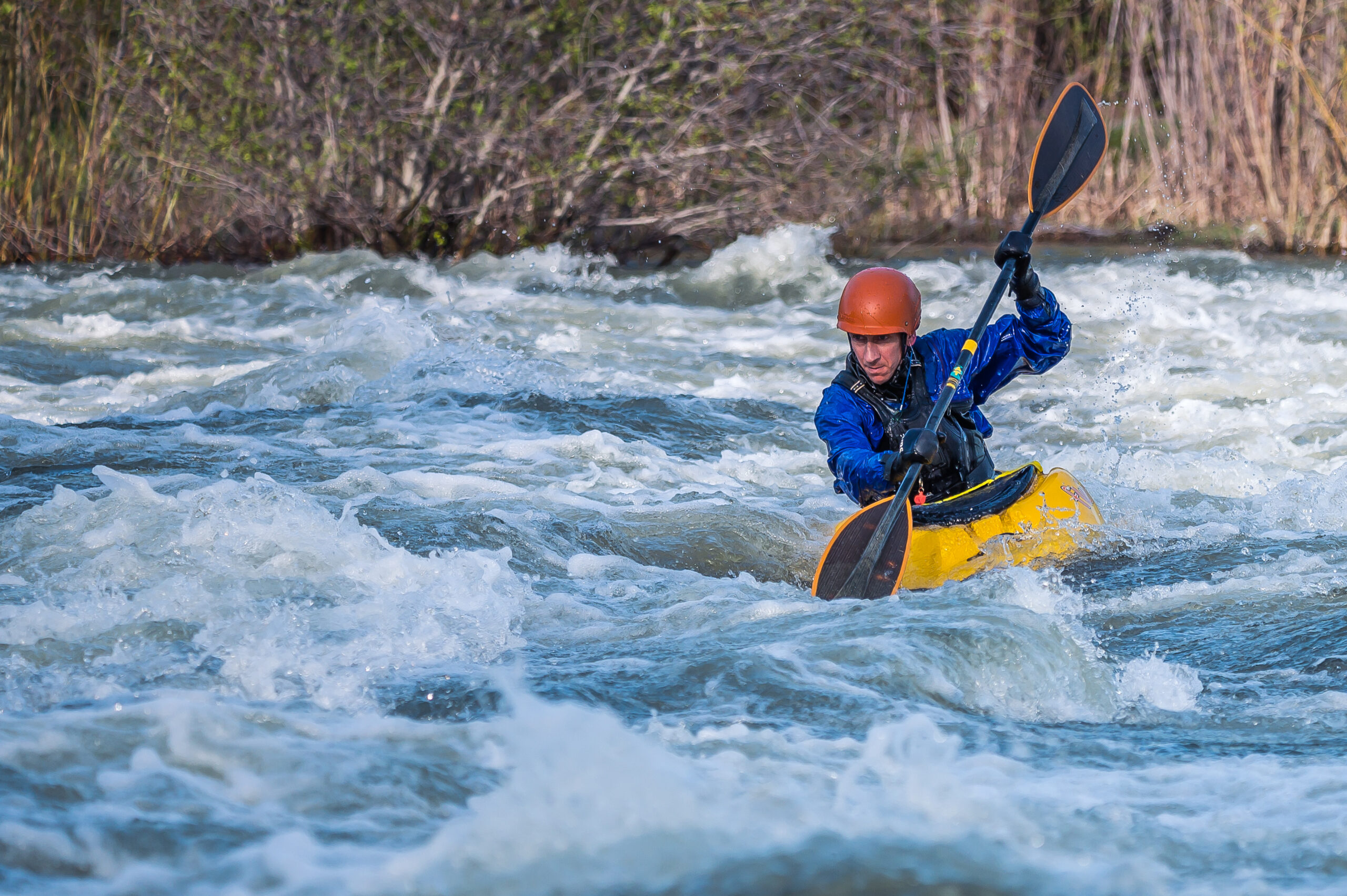
If you’re an avid kayaker looking to transport your two kayaks efficiently and securely, this article is for you! In this guide, you’ll learn the step-by-step process of how to safely secure two kayaks on a roof rack. From choosing the right tie-down straps to positioning the kayaks correctly, we’ve got you covered. So whether you’re heading to the nearest lake or embarking on a cross-country kayaking adventure, follow these easy tips to ensure your kayaks stay firmly in place during the entire journey.
Choosing the Right Roof Rack System
When it comes to transporting kayaks on your vehicle, one of the first considerations is choosing the right roof rack system. The weight capacity of the rack is crucial to ensure the safe and secure transportation of your kayaks. Before making a decision, check the manufacturer’s guidelines to determine the maximum weight that the roof rack can handle. It’s essential to select a roof rack system that can support the combined weight of your kayaks.
Selecting the Appropriate Rack Type
There are various types of roof rack systems available, each designed to cater to different needs. The rack type you choose will depend on factors such as the number of kayaks you plan to transport and your personal preferences. Some common types of roof racks for kayaks include J-cradles, stacker bars, and side-by-side saddles. Consider the advantages and disadvantages of each type and select the one that best suits your requirements.
Ensuring Proper Installation
Once you have chosen the appropriate roof rack system for your kayaks, it’s crucial to ensure proper installation. Improper installation can lead to accidents and damage to your kayaks or vehicle. Follow the manufacturer’s instructions carefully and pay close attention to the placement and tightening of the rack components. Double-check that the roof rack is securely attached to your vehicle before proceeding with the next steps.
Prepping the Kayaks for Transport
Before loading your kayaks onto the roof rack, it’s important to prepare them properly. Start by cleaning the kayaks to remove any dirt, sand, or debris that may have accumulated. This not only keeps your kayaks looking their best but also prevents any foreign materials from scratching or damaging the roof of your vehicle. Use a gentle detergent and a soft brush to clean the kayaks thoroughly, and rinse them with clean water.
Next, remove any detachable parts from your kayaks, such as seats, paddles, or fishing gear. Detachable parts can easily get damaged during transportation or cause instability if left attached. Storing these items separately during transport ensures their safety and helps maintain the balance of your loaded kayaks.
To protect the kayaks’ hulls, consider using kayak covers or padding. These protective measures can prevent scratches and dents caused by contact between the kayaks and the roof rack. Foam pads or specialized kayak saddles can also provide added cushioning, minimizing the risk of damage to the hulls during transport.
Determining the Best Loading Configuration
The loading configuration you choose can significantly impact the stability and safety of your kayaks during transport. Here are three common loading styles to consider:

J-Cradle Style
The J-cradle style is a popular loading configuration as it provides excellent support and stability for kayaks. With this style, the kayaks are placed on their sides in a J-shaped cradle, allowing for efficient use of space on the roof rack. The J-cradle design also minimizes wind resistance, reducing the chances of drag and improving fuel efficiency.
Stacker Style
The stacker style involves placing one kayak flat on the roof rack with the second kayak stacked on top. This loading configuration is ideal when you want to transport two kayaks without sacrificing a significant amount of roof space. However, it’s important to ensure that the kayaks are adequately secured and balanced to avoid any shifting or damage during travel.
Side-by-Side Style
In the side-by-side style, the kayaks are placed next to each other on the roof rack. This configuration provides a straightforward, symmetrical setup, making it easy to load and unload the kayaks. It’s crucial to use proper padding or cradles to keep the kayaks stable and prevent any rubbing or damage between them.
Consider the specific dimensions of your kayaks, the space available on your roof rack, and your personal preferences when determining the best loading configuration for your needs.
Securing the Kayaks to the Roof Rack
Once you have determined the loading configuration, it’s time to secure your kayaks to the roof rack. Properly securing your kayaks is essential to prevent them from shifting, loosening, or becoming dislodged during transportation. Follow these steps to ensure a secure and safe journey:
Positioning the Kayaks
Position your kayaks on the roof rack according to the chosen loading configuration. Make sure they are centered and aligned properly to maintain balance and distribute weight evenly. Take into consideration any overhang or protruding parts and adjust the positioning accordingly to avoid any interference with the vehicle or other objects.

Using Straps and Bow/Stern Tie-Downs
Using high-quality kayak straps, secure the kayaks tightly to the roof rack. Start by wrapping the straps around the kayaks, passing them through the roof rack’s anchor points, and then looping them back over the kayaks. Ensure that the straps are snug and free of any twists or tangles. Repeat this process for each kayak, using multiple straps for added security if desired.
Additionally, attach bow and stern tie-downs to the front and rear of each kayak. These tie-downs provide crucial stability and prevent any forward or backward movement. Connect the tie-downs to secure anchor points on your vehicle, such as the tow hooks or bumper.
Tightening the Straps Correctly
When tightening the straps, be firm but not excessive. Apply enough pressure to secure the kayaks tightly without causing damage. It’s important to avoid overtightening, as this can put unnecessary strain on the kayak hulls and the roof rack. Test the stability by gently rocking the kayaks from side to side to ensure they are secure and don’t shift when under pressure.
Double-Checking the Security of the Kayaks
Before hitting the road, it’s crucial to double-check the security of your kayaks. Giving them a firm shake will help identify any potential issues or loosening in the straps or tie-downs. Additionally, inspect the straps to ensure they are still taut and haven’t loosened during the loading process. Verify the bow/stern tie-downs for proper attachment and tightness.
Taking a few moments to double-check the security of your kayaks can provide peace of mind during your journey and prevent any unexpected incidents or damage.
Driving with Kayaks on the Roof Rack
Driving safely and responsibly with kayaks on your roof rack is essential to ensure not only the safety of your kayaks but also the well-being of yourself and other road users. Here are some important points to consider:

Safe Driving Practices
Observe safe driving practices such as following speed limits, maintaining a safe distance from other vehicles, and using turn signals appropriately. Be mindful of the taller profile of your vehicle with the kayaks loaded on the roof rack, which may necessitate adjustments in your driving habits.
Monitoring the Kayaks Periodically
While driving, periodically check your rearview mirror to monitor the kayaks on your roof rack. Ensure they are still securely attached and haven’t shifted during your journey. If you notice any signs of movement or instability, pull over at a safe location and recheck the straps and tie-downs.

Avoiding High-Speed or Rough Driving
To minimize the risk of damage to your kayaks and maintain their stability, avoid high speeds and rough driving conditions such as sudden stops, sharp turns, or uneven terrains. These maneuvers can put excessive stress on the roof rack system and potentially damage your kayaks or vehicle.
Ensuring Visibility and Legal Compliance
When transporting kayaks on your roof rack, it’s crucial to prioritize visibility and comply with local regulations. Here are some key factors to consider:
Providing Adequate Warning Flags
Attach warning flags to the rear of your kayaks to enhance visibility to other drivers. These bright-colored flags signal the presence of elongated objects and help prevent potential accidents or collisions.

Using a Red Rear Marker
In many jurisdictions, it is a legal requirement to display a red rear marker on the edge of any items extending past the vehicle’s rear. Check the specific regulations in your area and affix a red rear marker if necessary to ensure compliance.
Checking Local Regulations
Different regions may have specific regulations regarding the transportation of kayaks or other large objects on roof racks. Familiarize yourself with local laws, including any restrictions on speed, load dimensions, or additional equipment required. Following these regulations ensures a safe and smooth journey while preventing any legal complications.
Unloading the Kayaks
When you reach your destination, it’s time to unload the kayaks from your roof rack. Follow these steps for a safe and efficient unloading process:
Loosen the Straps and Tie-Downs
Start by loosening the straps and bow/stern tie-downs that secure the kayaks to the roof rack. Ensure the straps are sufficiently loose to safely remove the kayaks but still provide enough control during the unloading process.
Remove the Kayak Accessories
Before lifting the kayaks off the roof rack, remove any accessories or equipment you attached during transport. This includes paddle holders, fishing gear, or any other items that were secured to the kayak or roof rack. Removing these accessories prevents accidental damage during unloading and ensures that everything is safely accounted for.
Unload the Kayaks with Caution
With the straps and accessories removed, carefully lift and remove each kayak from the roof rack. Use proper lifting techniques, enlisting assistance if necessary, to avoid straining yourself or damaging the kayaks. Gently lower the kayaks to the ground or a suitable storage area, being mindful of any potential obstacles or hazards.
Storing the Roof Rack System
When not in use, it’s important to properly store your roof rack system to maintain its longevity and functionality. Follow these steps for convenient and efficient storage:
Cleaning and Drying the Racks
Before storing the roof rack, take the time to clean and dry all the components. Remove any dirt or debris that may have accumulated during transportation to prevent corrosion or damage. Use a mild detergent and water to clean the racks thoroughly, ensuring that all nooks and crevices are free of grime. Once cleaned, allow the racks to dry completely before storage.
Disassembling or Folding the Racks
Depending on the type and design of your roof rack system, you may need to disassemble or fold it before storage. Follow the manufacturer’s instructions to properly disassemble all rack components or collapse the racks if needed. This will help save space and prevent any potential damage while in storage.
Proper Storage to Prevent Damage
Choose an appropriate storage location for your roof rack system. Ideally, store it in a clean, dry area away from direct sunlight and extreme temperatures. Avoid placing heavy objects on top of the racks that can cause deformation or bending. Using storage covers or bags specifically designed for roof rack systems can provide added protection from dust and other potential damage.
Regular Maintenance and Inspection
To ensure the safety and longevity of your roof rack system and kayaks, regular maintenance and inspection are important. Here are some key areas to focus on:
Inspecting the Racks and Straps
Periodically inspect the roof rack system for any signs of wear, damage, or loose components. Pay particular attention to the straps, checking for fraying, weakened areas, or any signs of deterioration. Address any issues promptly by repairing or replacing damaged parts to maintain optimal safety and functionality.
Replacing Damaged Components
If you discover any damaged components during your inspection, it’s crucial to replace them promptly. This includes any worn-out straps, cracked or bent rack components, or signs of structural weakness. Investing in high-quality replacement parts ensures the continued reliability and effectiveness of your roof rack system.
Cleaning and Maintaining the Kayaks
Regularly cleaning and maintaining your kayaks is also essential for their longevity and performance. Rinse the kayaks after each use to remove saltwater, sand, or debris that can cause corrosion or damage. Inspect the hulls for any signs of wear, cracks, or scratches. Repair or address any issues promptly to prevent them from worsening over time.
By following these guidelines for choosing, loading, securing, driving, and maintaining your kayaks on a roof rack, you can ensure a safe and enjoyable experience every time you hit the road with your beloved watercraft. Remember to prioritize safety, follow local regulations, and take the necessary precautions to protect both your kayaks and fellow road users. Happy kayaking!









